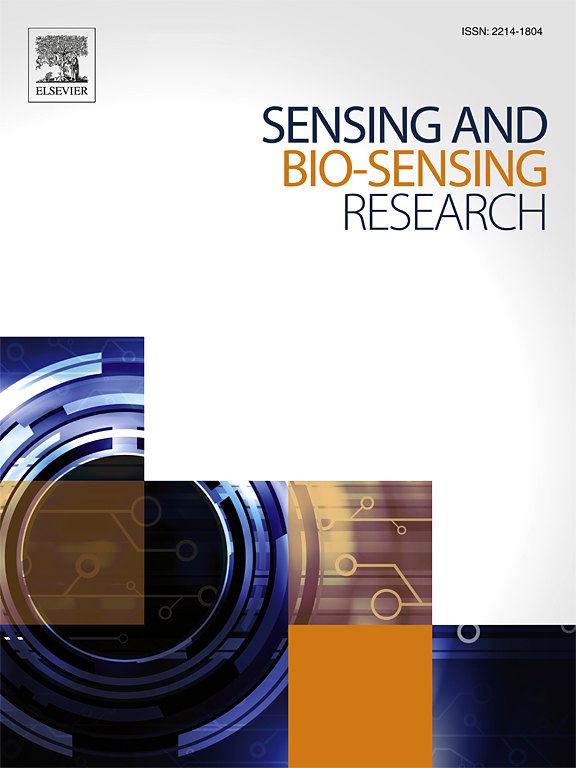MXenes in biosensing: Enhancing sensitivity and flexibility – A review of properties, applications, and future directions
IF 5.4
Q1 CHEMISTRY, ANALYTICAL
引用次数: 0
Abstract
MXenes are a novel type of nanostructured material that has received a lot of attention for their potential applications in bioanalysis owing to their unique features. These materials, made from transition metal nitrides, carbides, or carbonitrides, have a number of advantages, including high hydrophilicity, a large surface area, strong metallic conductivity, superior ion transport capabilities, biocompatibility, and low diffusion barriers. Their surfaces are easily manipulated, making them more adaptable for a variety of applications, including biosensing. The outstanding properties of MXenes have attracted researchers of different fields, including renewable energy, fuel cells, supercapacitors, electronics, and catalysis. In the context of biosensing, MXenes are particularly noteworthy because of their layered structure and composition, which render them suitable for both electrochemical and optical biosensors. The high electrical conductivity and multilayered design of MXenes facilitate effective charge transport and the preservation of biological activity when biomolecules are attached to their surfaces. This characteristic positions them as ideal candidates for the creation of sensitive and efficient electrochemical biosensors. Moreover, the inherent flexibility of MXenes allows for the development of sensors compatible with wearable technologies, presenting substantial opportunities for real-time, on-body detection of biomolecules. This review looks at various applications of MXenes in electrochemical and optical biosensing, with a focus on how they help improve sensor performance metrics like sensitivity, stability, and biocompatibility. It also discusses the obstacles and limitations that must be overcome to fully realize MXenes' potential in biosensor technology, such as issues with large-scale manufacturing, surface modification, and long-term stability. The review concludes by discussing future directions and advancements in this field.
MXenes在生物传感中的应用:提高灵敏度和灵活性-综述其性质、应用和未来发展方向
MXenes是一种新型的纳米结构材料,由于其独特的特性,在生物分析方面的潜在应用受到了广泛的关注。这些材料由过渡金属氮化物、碳化物或碳氮化物制成,具有许多优点,包括高亲水性、大表面积、强金属导电性、优越的离子传输能力、生物相容性和低扩散障碍。它们的表面易于操作,使它们更适合各种应用,包括生物传感。MXenes的优异性能吸引了包括可再生能源、燃料电池、超级电容器、电子和催化等不同领域的研究人员。在生物传感领域,MXenes由于其分层结构和组成而特别值得注意,这使得它们适用于电化学和光学生物传感器。当生物分子附着在MXenes表面时,其高导电性和多层设计有利于有效的电荷传输和生物活性的保存。这一特性使它们成为制造灵敏、高效的电化学生物传感器的理想人选。此外,MXenes固有的灵活性允许开发与可穿戴技术兼容的传感器,为生物分子的实时身体检测提供了大量机会。本文综述了MXenes在电化学和光学生物传感中的各种应用,重点介绍了它们如何帮助提高传感器的性能指标,如灵敏度、稳定性和生物相容性。它还讨论了必须克服的障碍和限制,以充分实现MXenes在生物传感器技术中的潜力,如大规模制造,表面改性和长期稳定性问题。最后讨论了该领域未来的发展方向和进展。
本文章由计算机程序翻译,如有差异,请以英文原文为准。
求助全文
约1分钟内获得全文
求助全文
来源期刊

Sensing and Bio-Sensing Research
Engineering-Electrical and Electronic Engineering
CiteScore
10.70
自引率
3.80%
发文量
68
审稿时长
87 days
期刊介绍:
Sensing and Bio-Sensing Research is an open access journal dedicated to the research, design, development, and application of bio-sensing and sensing technologies. The editors will accept research papers, reviews, field trials, and validation studies that are of significant relevance. These submissions should describe new concepts, enhance understanding of the field, or offer insights into the practical application, manufacturing, and commercialization of bio-sensing and sensing technologies.
The journal covers a wide range of topics, including sensing principles and mechanisms, new materials development for transducers and recognition components, fabrication technology, and various types of sensors such as optical, electrochemical, mass-sensitive, gas, biosensors, and more. It also includes environmental, process control, and biomedical applications, signal processing, chemometrics, optoelectronic, mechanical, thermal, and magnetic sensors, as well as interface electronics. Additionally, it covers sensor systems and applications, µTAS (Micro Total Analysis Systems), development of solid-state devices for transducing physical signals, and analytical devices incorporating biological materials.
 求助内容:
求助内容: 应助结果提醒方式:
应助结果提醒方式:


